BQEYZ Frost Review: Smooth Dynamics, Surprising Soul-Sonic Sleuth
共有
BQEYZ Frost Review: Smooth Dynamics, Surprising Soul
Pros:
Warm, cozy, and inviting tonality ideal for long, non-fatiguing listening sessions.
Excellent driver coherence creates a seamless and integrated sound profile.
Lush, soulful midrange that renders vocals with a rich and full-bodied character.
Organic and natural timbre provides a realistic presentation of instruments.
Satisfyingly thumpy and dynamic mid-bass with a solid sense of impact.
Polished and elegant treble provides good detail and air without harshness or sibilance.
Impressively wide soundstage for an IEM at this price.
Robust and premium all-metal shell construction feels durable and well-made.
Excellent long-term wearing comfort due to the small, ergonomic shell design.
Easy to drive effectively from a wide variety of sources, including basic dongles
Excellent driver coherence creates a seamless and integrated sound profile.
Lush, soulful midrange that renders vocals with a rich and full-bodied character.
Organic and natural timbre provides a realistic presentation of instruments.
Satisfyingly thumpy and dynamic mid-bass with a solid sense of impact.
Polished and elegant treble provides good detail and air without harshness or sibilance.
Impressively wide soundstage for an IEM at this price.
Robust and premium all-metal shell construction feels durable and well-made.
Excellent long-term wearing comfort due to the small, ergonomic shell design.
Easy to drive effectively from a wide variety of sources, including basic dongles
Cons:
Sub-bass lacks deep, visceral rumble and authority for bass-heavy genres.
Mid-bass can lack speed and sound slightly congested on very fast, complex tracks.
Slight mid-bass bleed can reduce the ultimate sense of clarity in the lower midrange.
Forward upper midrange can occasionally push vocals too far forward in the mix.
Shallow fit and short nozzle design result in only average noise isolation.
Mid-bass can lack speed and sound slightly congested on very fast, complex tracks.
Slight mid-bass bleed can reduce the ultimate sense of clarity in the lower midrange.
Forward upper midrange can occasionally push vocals too far forward in the mix.
Shallow fit and short nozzle design result in only average noise isolation.
Preface
I borrowed this unit from a friend @gadgetgod
I'm not the one to usually focus on specifications and numbers. I focus more on how happy I am with the equipment's sound and that's it.
Disclaimer: All impressions and opinions in this review are my own. I have not been paid or compensated by BQEYZ or any other entity for this review. My assessment is based solely on my personal experience with the product.
Introduction
In a market flooded with weekly releases and endless hype cycles, BQEYZ operate on a different timeline. A more deliberate one. You don't see them churning out a dozen models a year. Not their style. Instead, each release feels like a considered step, a focused effort to refine their craft and explore new audio technologies.I've followed their journey through some truly interesting driver implementations over the years, from their unique bone conduction systems to their experiments with passive radiators. It’s a clear sign of a company dedicated to genuine research and development, not just chasing trends. They consistently deliver products with a high level of build quality and a tuning philosophy that prioritizes a rich, organic musicality. So, when I received the Frost, it came with a certain weight of expectation. It represents the next chapter in their methodical pursuit of sound.
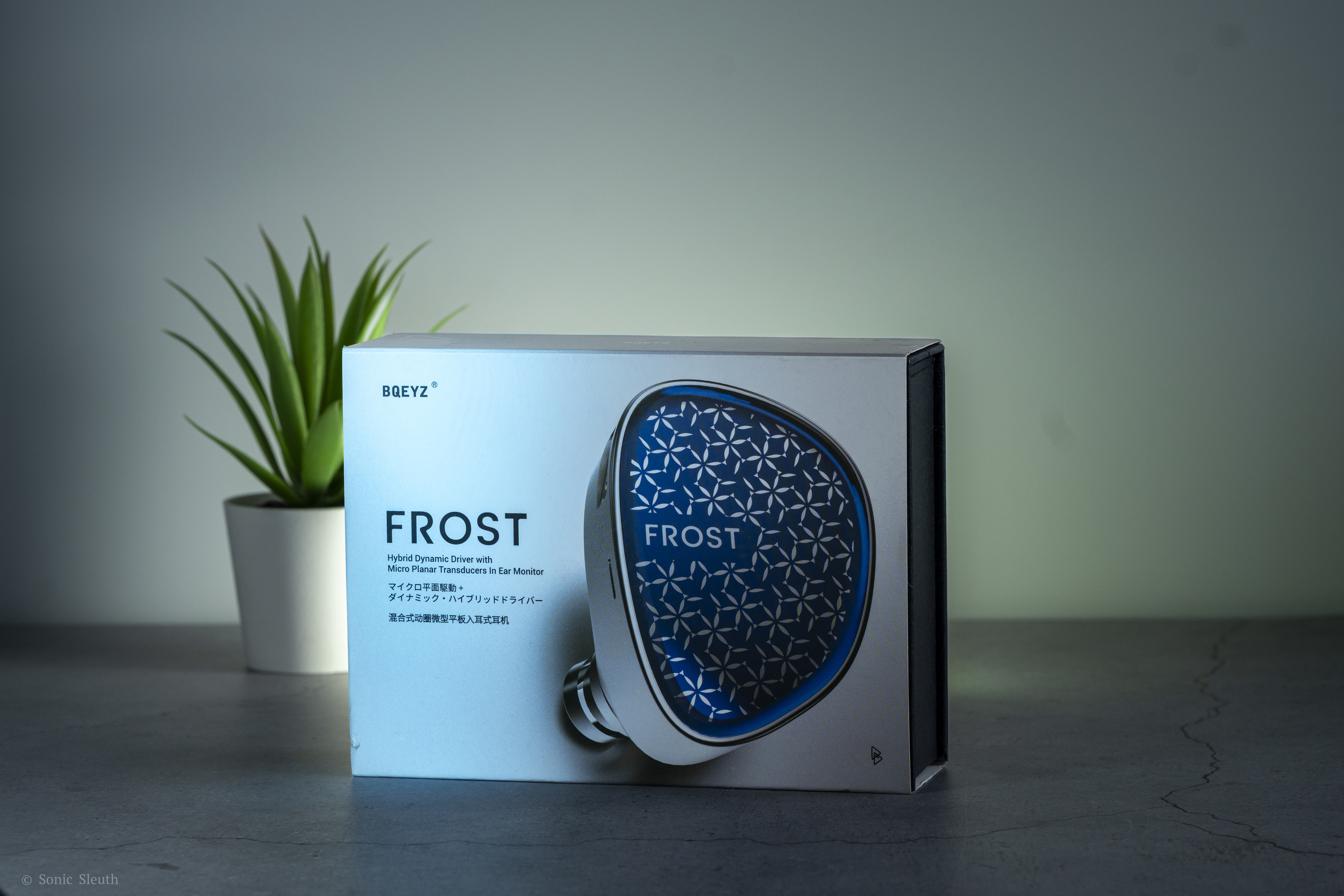
Specifications
- Driver Configuration : 10mm Dynamic Driver + Micro Planar Transducers
- Impedance : 32 Ω
- Sensitivity : 113 dB
- Frequency Response : 5 Hz - 40 kHz
- Cable : Single Crystal Copper Silver-plated Coaxial Cable
Box Contents
- IEMs
- 2-Pin 0.78 mm Cable x1
- 3.5 mm or 4.4mm Plug Adapter x1 (Can be chosen at the time of purchase)
- Silicone Ear Tips x6 Pairs (S/M/L)
- Foam Ear Tips x1 Pair (S)
- IEM Cleaning brush x1
- IEM Case x1
Unboxing Experience
Frost arrives in a compact, elegant white box featuring a striking image of the IEM on the front. It's a clean, minimalist presentation. Upon sliding off the outer sleeve, you're greeted by a solid black inner box. The unboxing process itself is straightforward and satisfying. The IEMs are immediately visible, nestled securely in a foam cutout, proudly displaying their unique faceplates. Below this top layer, a smaller box houses the rest of the accessories. It’s a thoughtful arrangement that ensures everything is protected and easily accessible.
Inside, BQEYZ provides a comprehensive set of accessories. You get the IEMs themselves, of course, along with a high-quality 2-Pin 0.78mm cable with either a 3.5mm or a 4.4mm plug that can be chosen at the tome of purchase. They’ve also included a generous selection of ear tips—six pairs of silicone tips in S/M/L sizes, plus a pair of foam tips in size S. A small IEM cleaning brush is a practical addition, and a sturdy, zippered IEM case completes the package, ensuring safe storage and transport. It’s a well-curated unboxing experience, providing everything you need to get started right away.
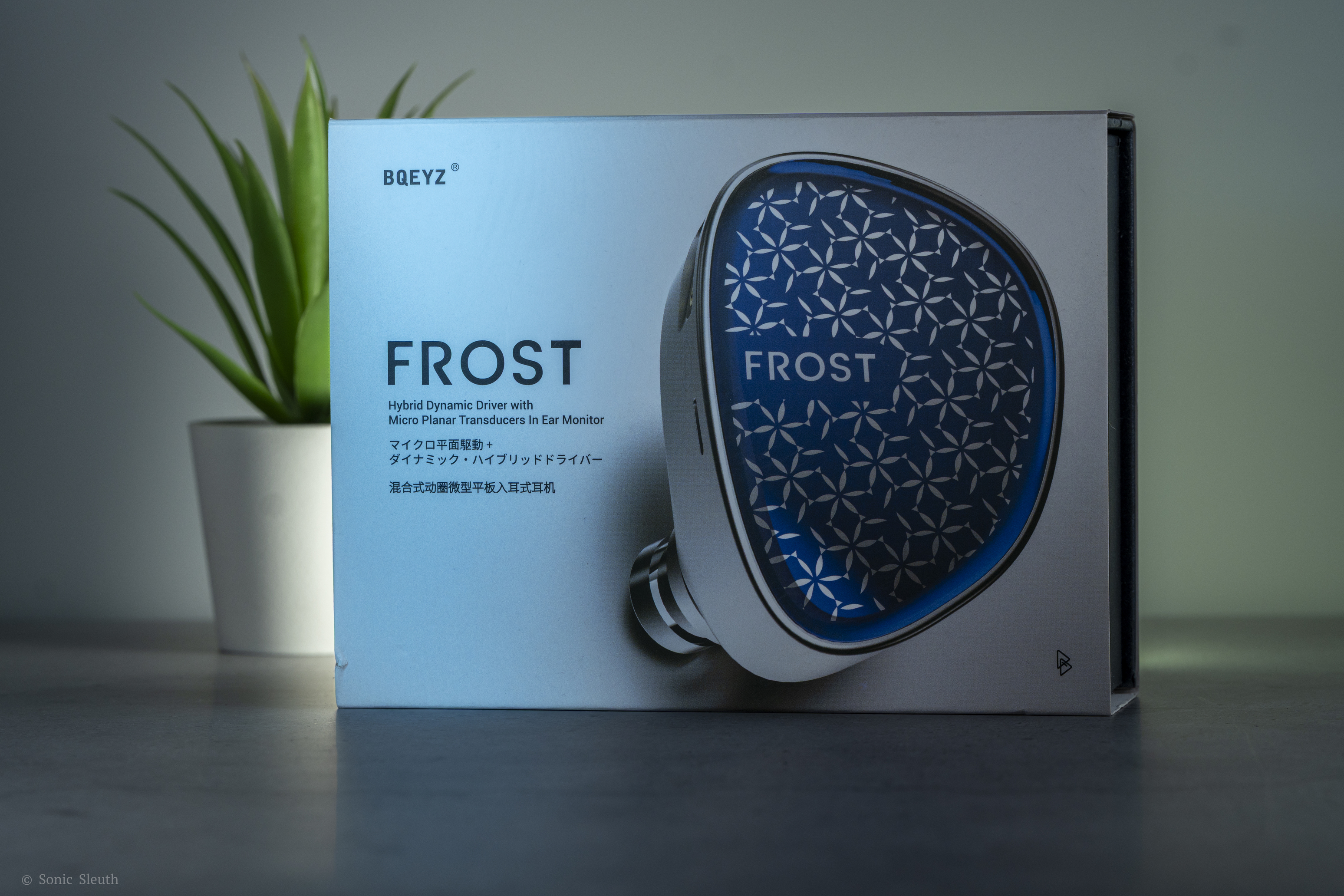
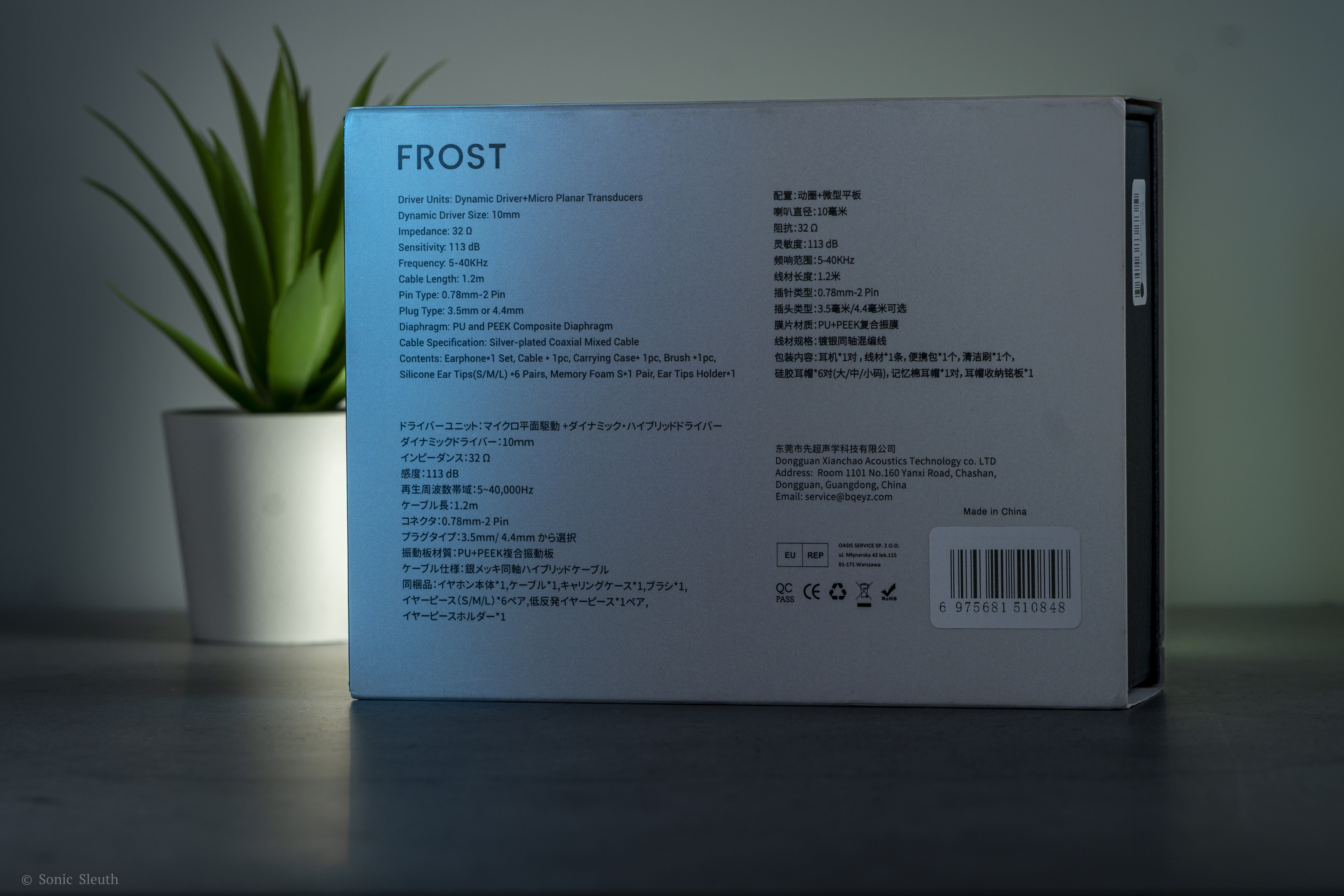
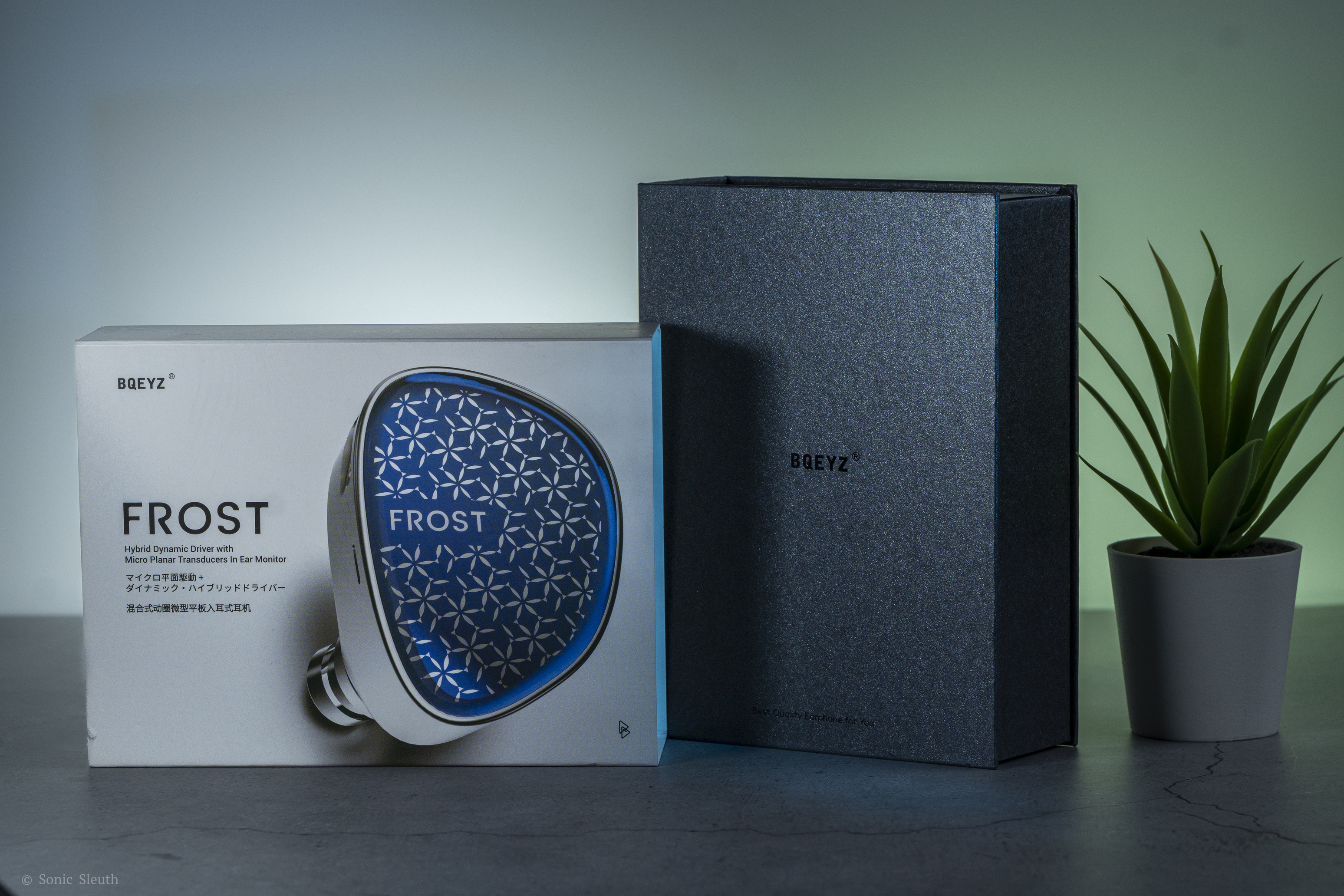
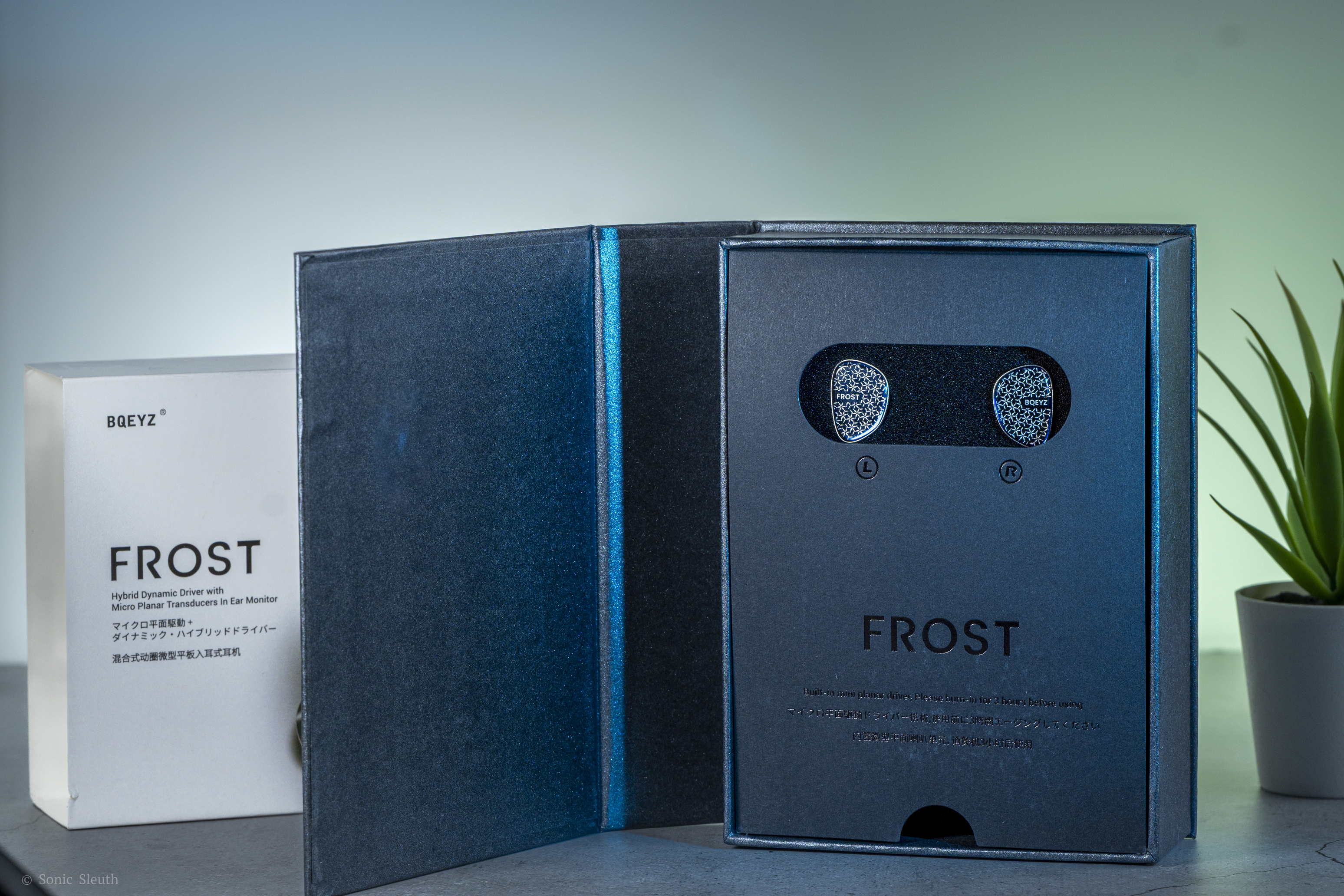
Design and Build
BQEYZ has opted for a robust, all-metal build for the Frost, which immediately conveys a sense of quality in hand. The shells are crafted from an anodized aluminum alloy, giving them a sleek and durable finish. The design departs slightly from previous BQEYZ models by incorporating what they describe as a glass faceplate. This faceplate features a delicate snowflake pattern and subtle branding beneath the glass, a nod to the "Frost" moniker. I personally like the blue and silver color combination, it's quite striking and refined. The overall contouring and shaping of the shell are well-considered, contributing to the comfortable fit.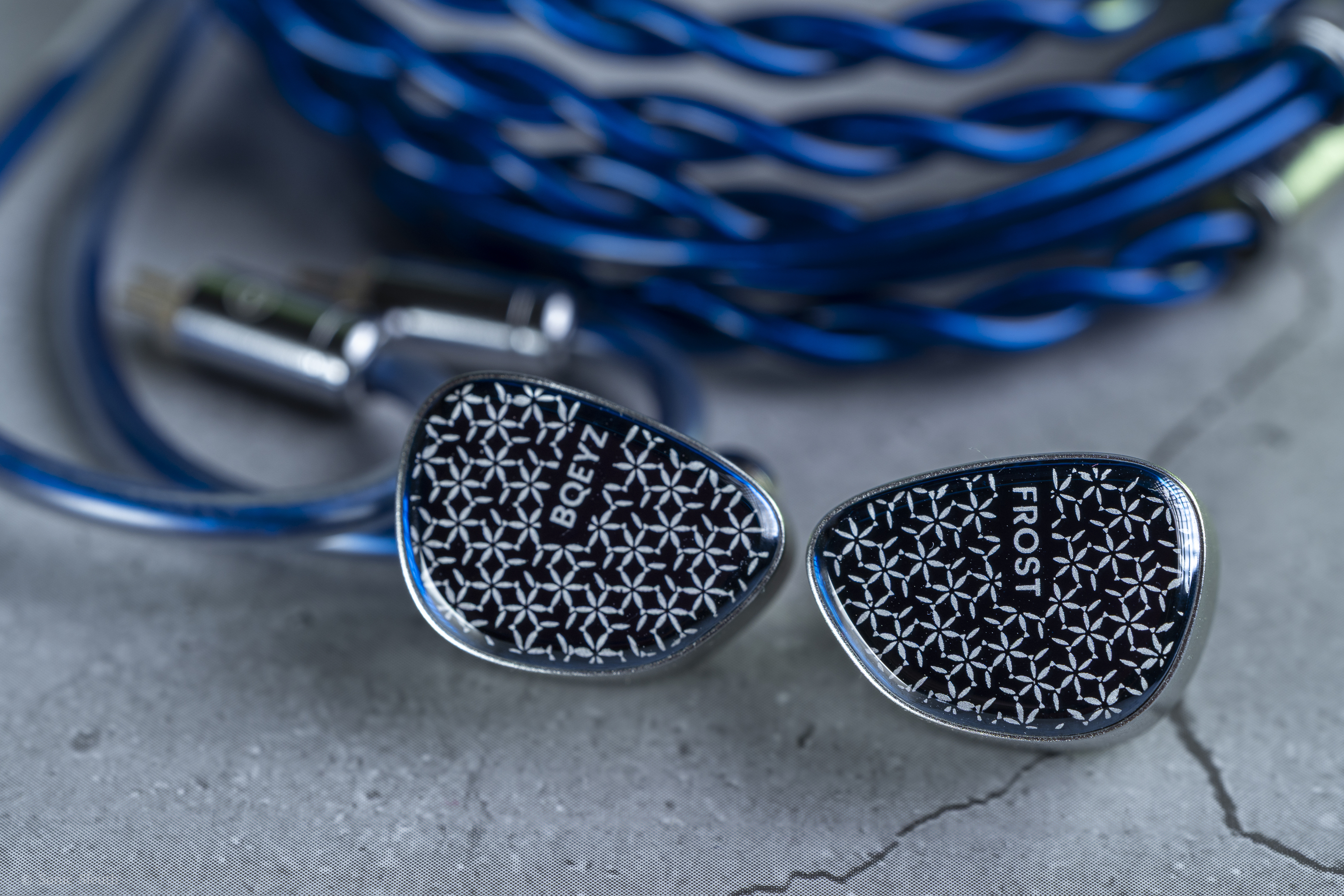
 The included cable is a Single Crystal Copper Silver-plated Coaxial Cable. It’s a nice blue and silver aesthetic that matches the IEMs, a cohesive design choice. While it's well-managed and resists tangling, I did find myself wishing it was just a touch softer to the touch. It utilizes secure 2-pin connectors at the earpiece, which is my preferred connection type. The variety of ear tips, as mentioned, is good, and the included hard case is practical for everyday use. It's not a flashy case, just a solid black one with the brand logo, but it does its job well, protecting the IEMs adequately and fitting easily into a pocket.
The included cable is a Single Crystal Copper Silver-plated Coaxial Cable. It’s a nice blue and silver aesthetic that matches the IEMs, a cohesive design choice. While it's well-managed and resists tangling, I did find myself wishing it was just a touch softer to the touch. It utilizes secure 2-pin connectors at the earpiece, which is my preferred connection type. The variety of ear tips, as mentioned, is good, and the included hard case is practical for everyday use. It's not a flashy case, just a solid black one with the brand logo, but it does its job well, protecting the IEMs adequately and fitting easily into a pocket.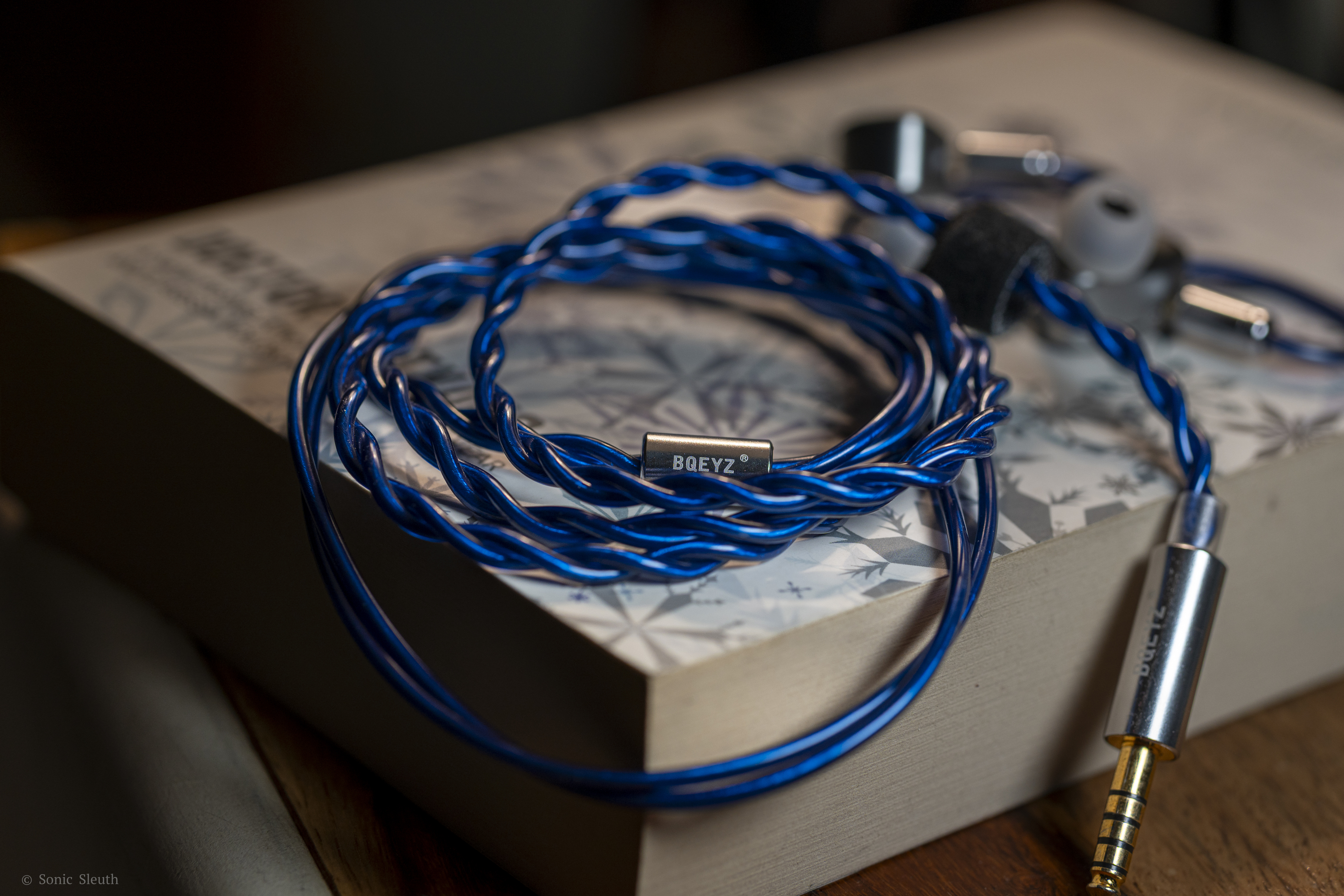
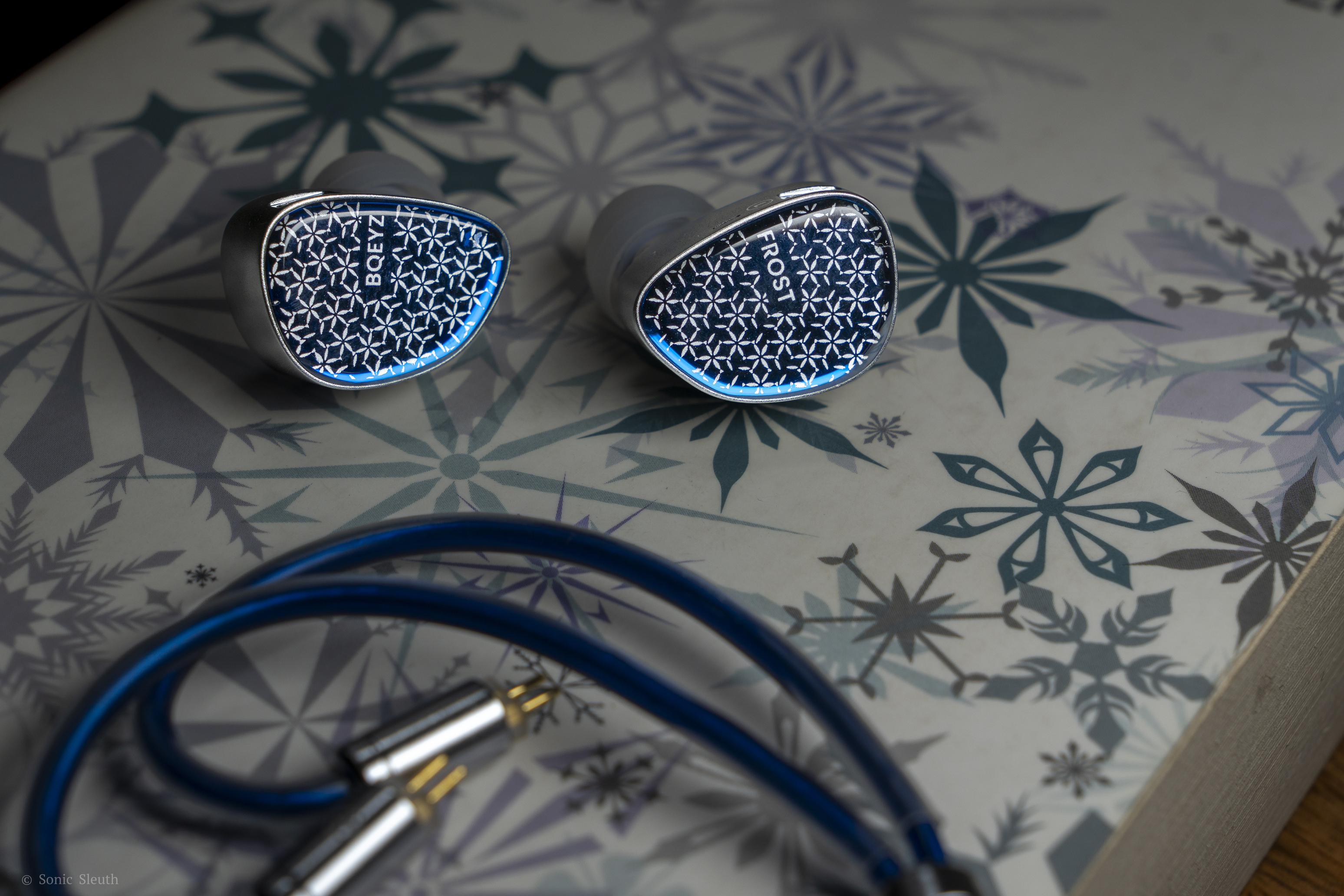
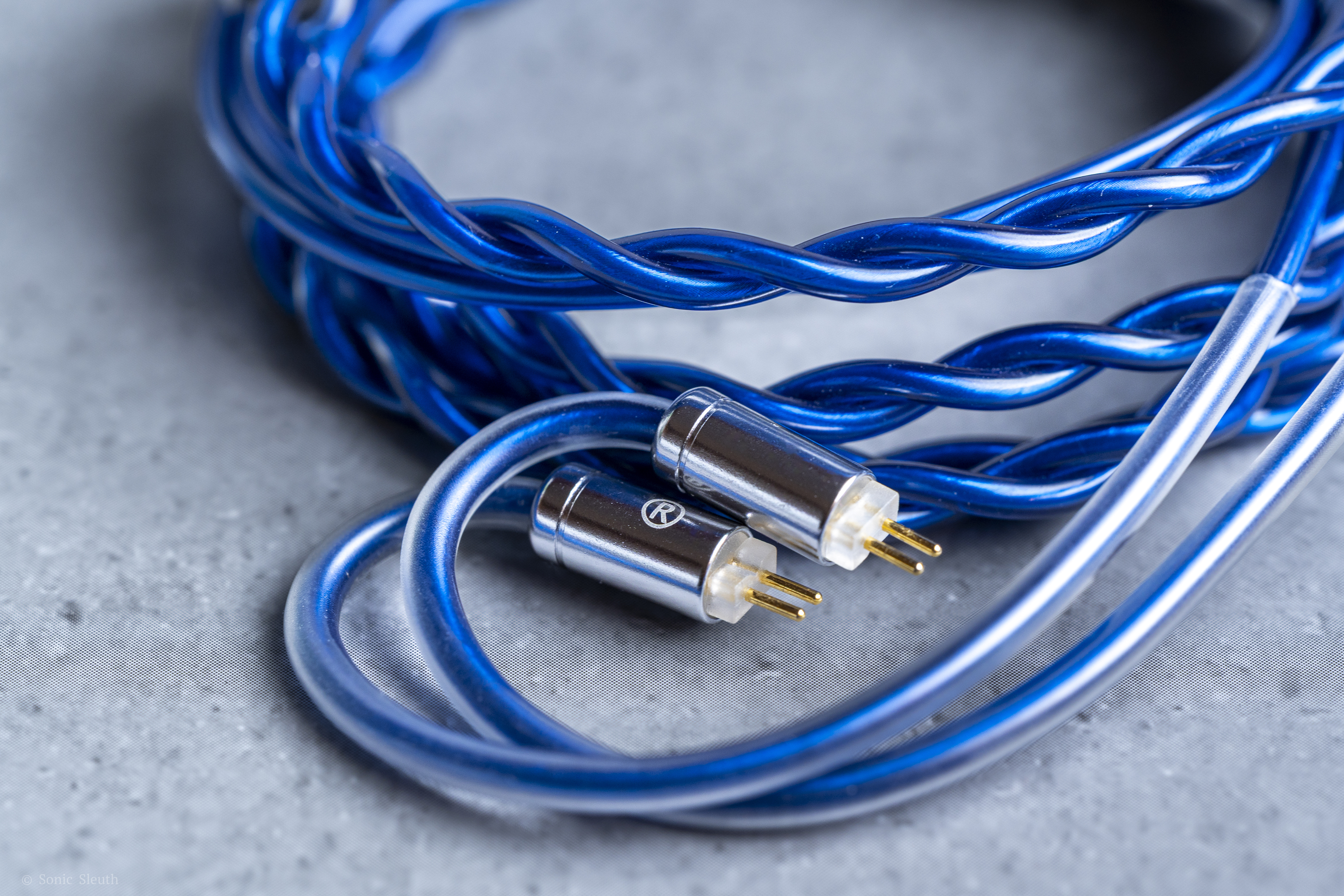
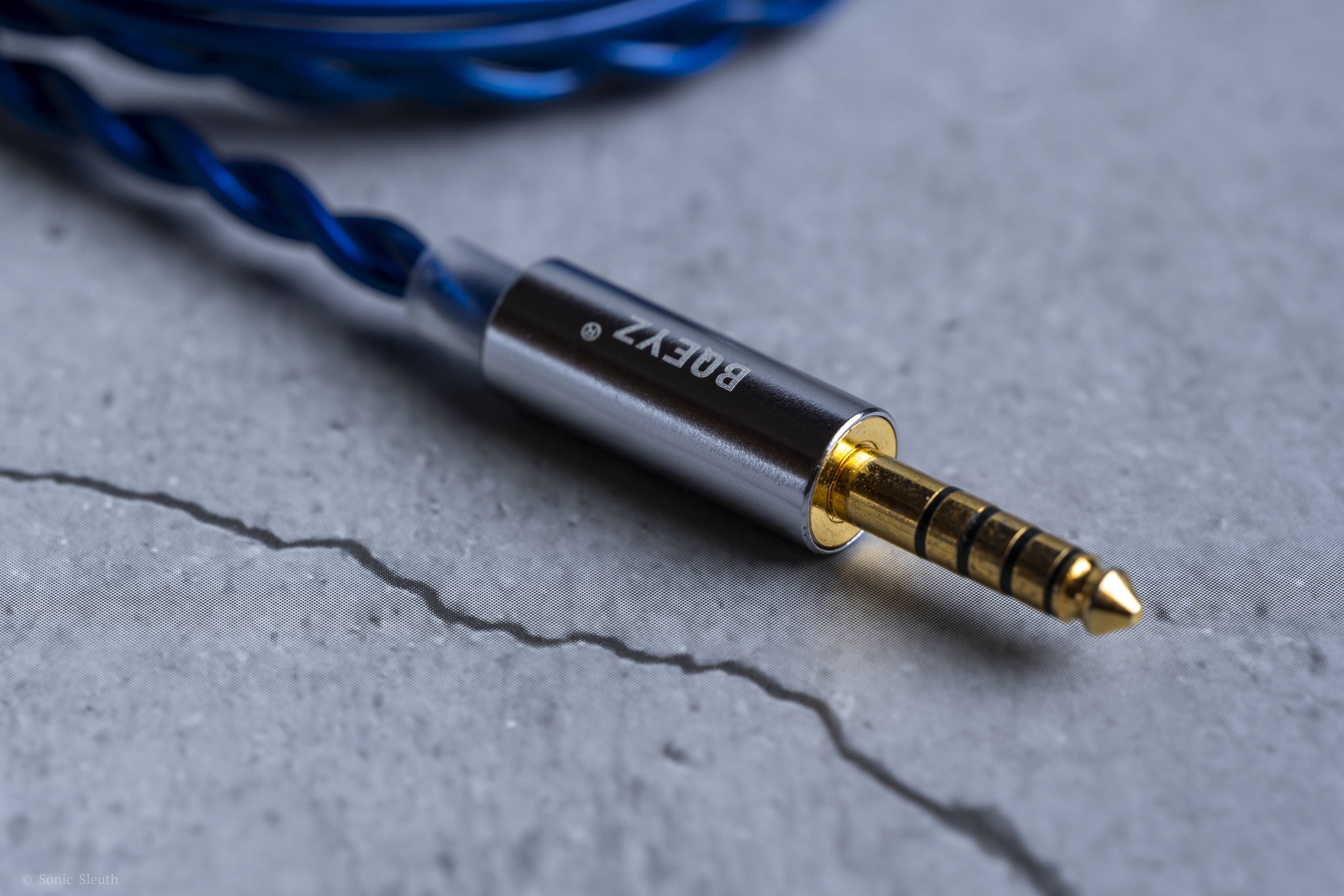
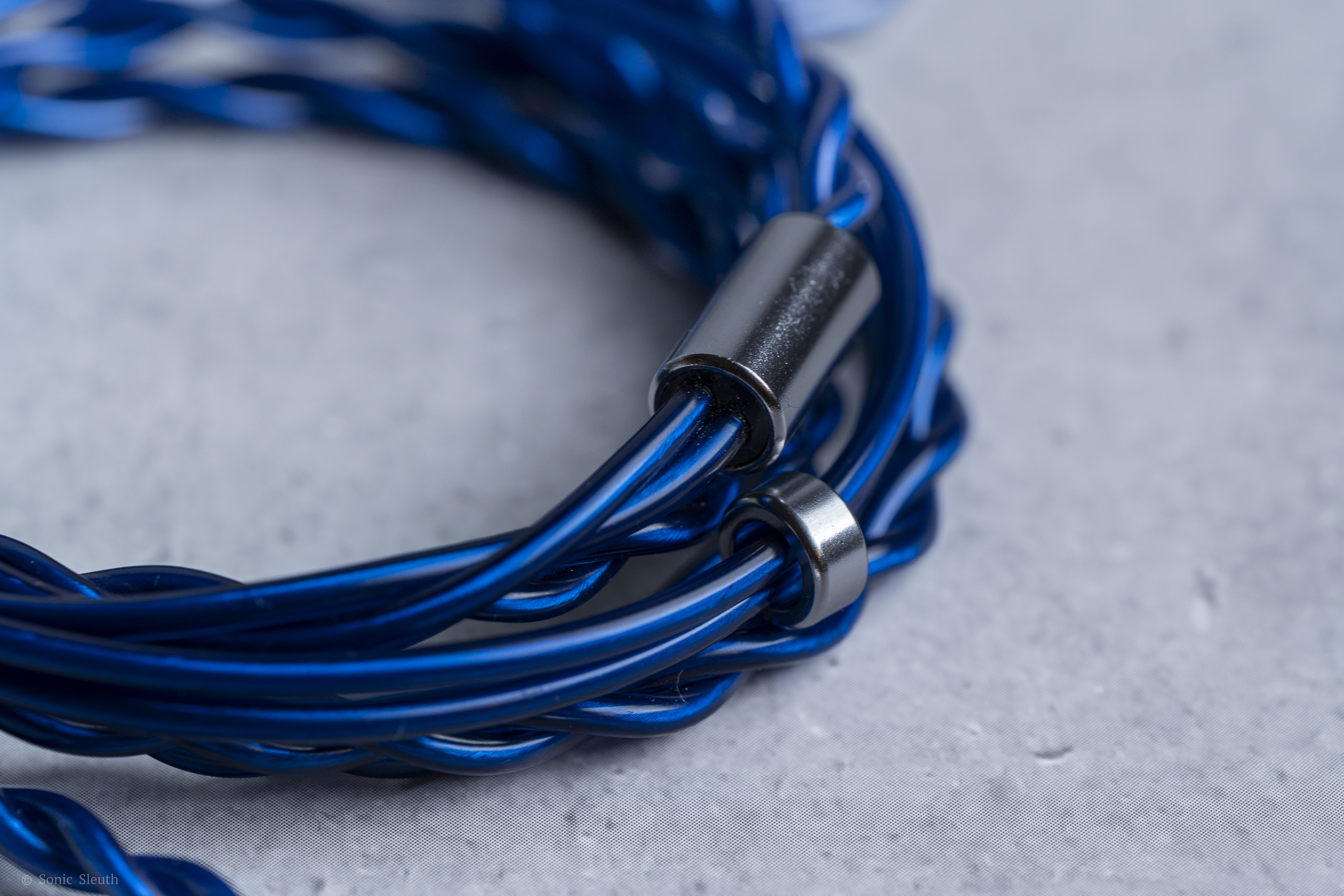
Wearing Comfort
Comfort is a strong point for the BQEYZ Frost. The shells are on the smaller side, and their ergonomic shaping really pays off. They fit my ears well, feeling secure without any undue pressure. The smooth, all-metal construction adds to the premium feel, and there are no sharp edges or uncomfortable angles. While the nozzle is relatively short, which can sometimes impact isolation, I found the overall comfort to be excellent for extended listening sessions. I experienced no noticeable hot spots or discomfort, even after several hours of use. It's an IEM you can easily forget you're wearing, allowing you to focus entirely on the music.
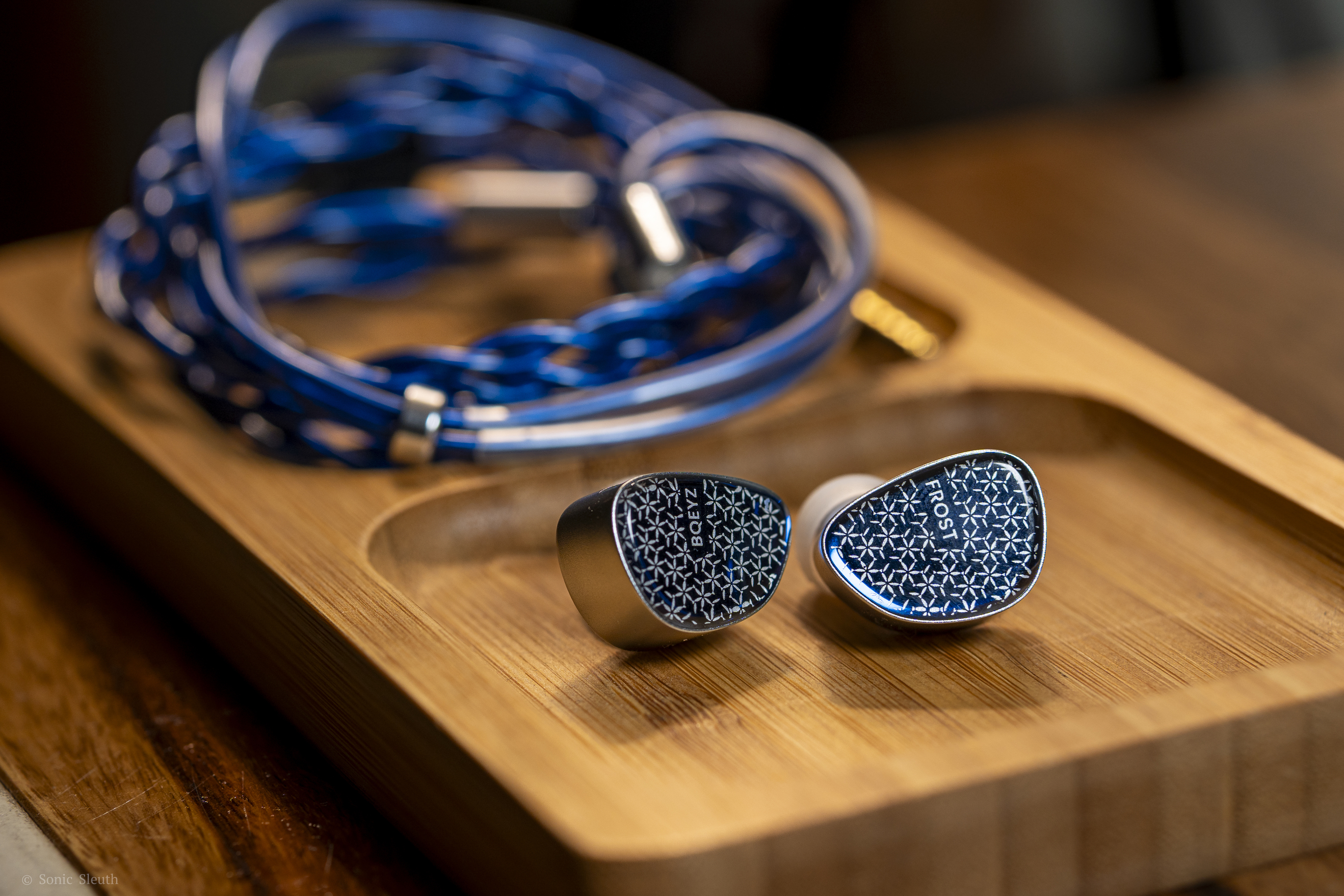
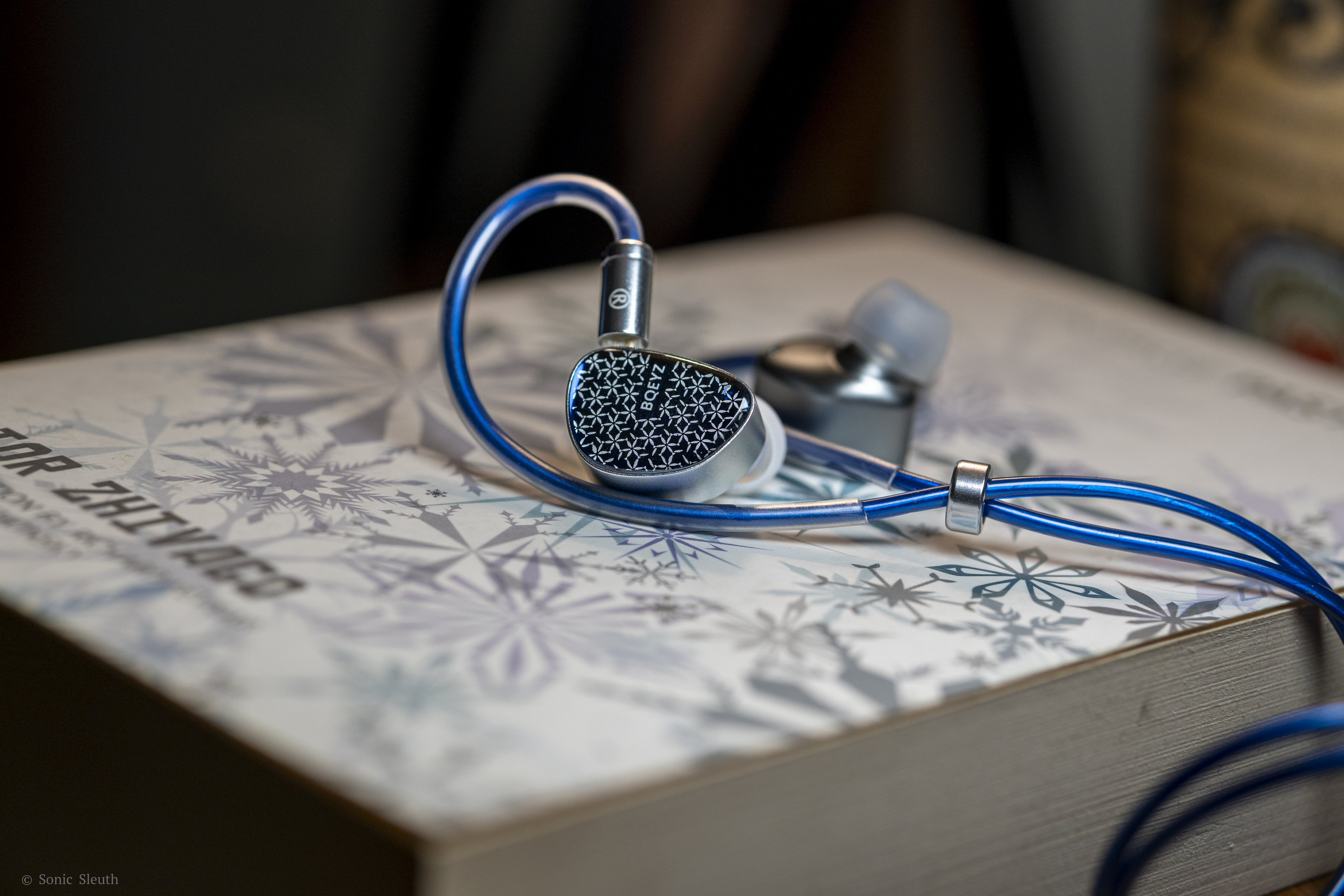


Driveability
With a sensitivity of 113 dB and an impedance of 32 Ω, the BQEYZ Frost is quite easy to drive. It doesn't demand excessive power to reach its full potential. I evaluated the Frost using both the iBasso D16 Taipan and the iBasso DC Elite, and both sources had no trouble driving it to satisfying volumes with plenty of headroom. Even from a simple dongle DAC with a good headphone output, you should get excellent results.
This is not an IEM that scales dramatically with more power. While higher-quality sources like the Taipan and DC Elite naturally offer a cleaner signal and better overall performance (as they would with any IEM), the core sound signature and dynamics of the Frost remain consistent across different power levels. You won't feel like you're missing out if you're not using a dedicated high-power amplifier. Its efficient design makes it a versatile choice for a wide range of portable setups.
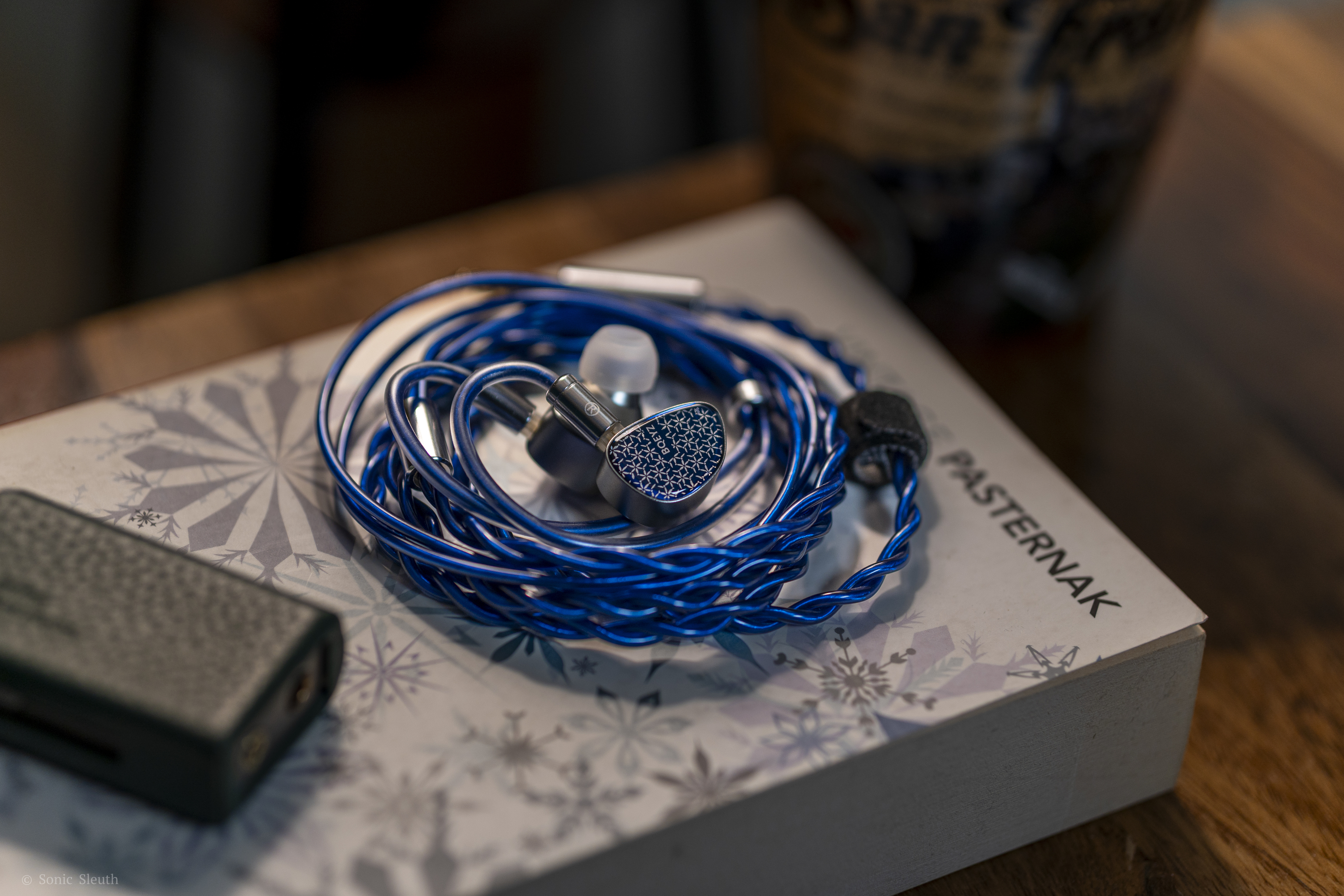
This is not an IEM that scales dramatically with more power. While higher-quality sources like the Taipan and DC Elite naturally offer a cleaner signal and better overall performance (as they would with any IEM), the core sound signature and dynamics of the Frost remain consistent across different power levels. You won't feel like you're missing out if you're not using a dedicated high-power amplifier. Its efficient design makes it a versatile choice for a wide range of portable setups.

Sound Analysis
Overall Tonality & Character:
The Frost is a fascinating IEM. Its name and chilly blue aesthetic might suggest a cool, analytical sound signature, but my experience was the complete opposite. This is a warm, cozy, and inviting listen. It's a departure from a strict Harman target, leaning into a more musical presentation with a prominent mid-bass and a very smooth, yet articulate, top end.This IEM is clearly tuned for enjoyment. There is a definite warmth that permeates the entire presentation, making it incredibly pleasant for long listening sessions. It’s not a sterile, reference-style monitor. Not at all. It has character. Listening to "Fast Car" by Tracy Chapman, her voice is rich and full-bodied, and the acoustic guitar has a wonderful warmth to its tone. On "Get Lucky" by Daft Punk, the four-on-the-floor kick drum provides a satisfyingly solid foundation, while Nile Rodgers' guitar riff cuts through with clarity but without any sharp edges. The whole presentation is just so smooth and engaging. It’s a sound signature that prioritizes musicality over pure technicality, and it does so with a surprising amount of grace.
Sub-Bass:
The sub-bass here is present, but it isn't the main focus of the low end. There’s a slight roll-off in the lowest frequencies. This means that while you get a sense of depth, you don't get that deep, visceral rumble that some genres demand.For instance, on James Blake's "Limit to Your Love," the iconic deep synth bass drop is audible, and you can follow the melody, but it lacks that chest-thumping pressure and authority. The texture of the sub-bass is there, but its sheer power is dialed back. Similarly, in Hans Zimmer's "Time," the deep, brooding synthesizer notes that build throughout the track feel a little polite. They don’t quite convey the immense scale and tension that a more sub-bass focused set would deliver. This isn’t necessarily a flaw, but a clear tuning choice. The Frost is not for bassheads looking for that subterranean feel.
Mid-Bass:
This is where the low-end action is. The mid-bass has a satisfying lift that gives kick drums and bass guitars a solid sense of impact and body. It’s a full, thumping mid-bass that provides a lot of the IEM's warmth and character. On "Billie Jean" by Michael Jackson, the iconic bassline is punchy and drives the rhythm forward with energy. It's got a really nice, rounded feel to it.The one area where I found myself hesitating was with speed and complexity. While the dynamics are great for pop and hip-hop, the slightly longer decay can make things a little messy on faster, more intricate tracks. Listening to "Bleed" by Meshuggah, a notoriously difficult track for drivers to keep up with, the rapid-fire double-kick drums lose some of their individual definition. Instead of a series of distinct hits, it can sound a bit smeared, a touch "woolly" for lack of a better word. The mid-bass control is good, just not elite, and this trade-off for warmth becomes apparent when the music gets really demanding.
Lower Midrange:
The warmth from that prominent mid-bass definitely bleeds a little into the lower midrange. This gives male vocals and instruments like cellos and the lower registers of a piano a wonderful sense of note weight and richness. It’s a very pleasing, organic presentation. Johnny Cash's voice on "Hurt" has a profound gravity and fullness that feels intimate and powerful. It’s a soulful and romantic kind of sound.However, that same warmth comes at the cost of ultimate clarity. The bleed can sometimes cast a slight haze over this region, obscuring the finest of textures. In the intro to "Roundabout" by Yes, Chris Squire's intricate bass work is all there, but the separation between his notes and the acoustic guitar isn't as sharp as it could be. It’s a trade-off. You gain a lush, full-bodied presentation, but you lose a small degree of separation and transparency in the process.
Upper Midrange:
I find the upper midrange to be forward, but in a very tasteful way. It brings vocals and lead instruments to the forefront of the mix without becoming aggressive or shouty. It seems more relaxed than some of the brand's past efforts. Female vocals, in particular, are presented with excellent presence and clarity. On "Joga" by Björk, her voice soars over the complex electronic and orchestral arrangement with a raw, emotional energy that is captivating without ever becoming harsh.The forwardness is generally natural, but it can occasionally push things a bit too far into the spotlight, depending on the mix. In "Dreams" by Fleetwood Mac, Stevie Nicks' voice is front and center, sounding wonderfully clear, but the background harmonies feel just a touch more recessed than I’m used to. It's a minor point, and for the most part, the energy here is well-judged, adding excitement and detail without inducing fatigue.
Lower Treble:
The transition from the upper-mids into the treble is handled very well. There's a good amount of energy here that brings out the snap of snare drums and the initial attack of cymbal hits, but it steers clear of any nasty peaks that could introduce sibilance or harshness. The lower treble is crisp enough to provide detail, but smooth enough to avoid being grating.Listening to "Take Five" by The Dave Brubeck Quartet, Joe Morello's cymbal work is a highlight. The ride cymbal has a pleasant metallic sheen and a natural timbre, and the hi-hats have a clean, precise "chick" sound. It's not an overly bright presentation, but it’s far from dark. On Steely Dan's "Aja," the intricate percussion and cymbal splashes are clear and well-defined, contributing to the track's complex rhythmic tapestry without ever sounding distracting or splashy.
Upper Treble:
The micro planar driver really makes its presence felt in the upper treble. There’s a good sense of extension and air here that keeps the presentation from sounding closed-in. It does a great job of rendering those subtle, high-frequency micro-details that add a sense of atmosphere and space to a recording. It’s all done in a very polished and elegant manner.In "So What" by Miles Davis, the delicate brushwork on the snare drum is easily perceptible, and you can hear the subtle shimmer of the cymbals fading into the background. It adds a layer of realism to the performance. Similarly, listening to "Starlight" by Muse, the shimmering synth arpeggios and atmospheric effects in the background are rendered with a nice sparkle, creating a wide and open feel. This treble sparkle is very well controlled; it's detailed without being fatiguing.
Soundstage:
For an IEM in this price bracket, the soundstage is impressively wide. The presentation extends comfortably beyond the confines of my head, particularly from left to right. It’s not just a flat plane of sound either, there's a decent, though not exceptional, sense of height and depth that gives the music room to breathe.Pink Floyd's "Money" is a great test for this. The iconic cash register effects at the beginning pan across the stage with a clear sense of movement and distance. When the band kicks in, the instruments feel well-spaced, avoiding a congested, center-locked image. The same is true for "Bohemian Rhapsody" by Queen, where the layered vocal harmonies in the operatic section are spread out across a wide stereo field, allowing you to pick out the different vocal lines.
Layering & Separation:
The Frost's ability to separate individual instruments is good, but it varies across the frequency spectrum. In the midrange and treble, the separation is quite clear. The micro planar does a good job of keeping high-frequency elements distinct from one another.Things get a little more complicated in the lower frequencies. As I mentioned before, on very dense and fast tracks, the warmth and slightly slower nature of the mid-bass can cause some blending of instruments. In Rage Against the Machine's "Killing in the Name," during the intense final crescendo, the kick drum, bass guitar, and heavily distorted guitar riff can sometimes meld together, making it a bit harder to pick apart each individual line. In contrast, on a simpler arrangement like "Yesterday" by The Beatles, the separation between the vocals, acoustic guitar, and string quartet is excellent. The layering is very good, as long as the lower-mids aren't too crowded.
Detail Retrieval & Resolution:
Detail retrieval is a bit of a mixed bag, but certainly good for the price. The upper treble is a definite strong point, where the micro planar excels at picking out subtle atmospheric cues and micro-details. You hear the room reverb and the faint decay of notes quite well.The limitation, again, lies in the warmth of the low end. That slight mid-bass bleed into the lower-mids means that some of the finer textures and details in bass guitars and male vocals can be smoothed over. On "Hallelujah" by Jeff Buckley, you get all the emotion and body of his voice, but you lose a tiny bit of the subtle rasp and texture that a more resolving set would expose. The overall resolution is solid, but it's not a detail monster. It presents music in a more holistic, cohesive way rather than picking it apart piece by piece.
Timbre & Tonal Accuracy:
This is one of the Frost's greatest strengths. For the most part, the timbre is wonderfully organic and natural. Instruments sound like they should. Pianos have a realistic weight and resonance, acoustic guitars have a woody character, and vocals sound authentic.Listening to "Vienna" by Billy Joel, the piano sounds rich and sonorous, with a very convincing tonal quality. There's no hint of metallic or plasticky artificiality. The same goes for the strings in Vivaldi’s "The Four Seasons." They sound natural and textured, not thin or screechy. There might be a very slight coloration in the highest frequencies on things like cymbals, but it never comes across as unnatural. It's just a hint of added sparkle rather than a significant departure from an accurate tonal presentation. It’s an incredibly pleasant and realistic listen.
Coherence:
The integration of the dynamic driver and the micro planar is, in a word, flawless. If I didn't know this was a hybrid, I would have easily guessed it was a single dynamic driver. The coherence is spotless. There is absolutely no perceptible disconnect between the bass, mids, and treble. The entire frequency range comes across as a single, unified wave of sound.This is something that's very difficult to get right, and BQEYZ has nailed it here. From the deepest bass notes to the highest treble shimmer, the sound is completely seamless. Tracks like "Pyramid Song" by Radiohead, which span a wide dynamic and frequency range, sound utterly cohesive. The transition from the deep piano chords to the delicate cymbal work and Thom Yorke's falsetto is perfectly smooth. This level of driver integration is exceptional for the price and is a huge part of what makes the Frost sound so natural and musical.
Conclusion
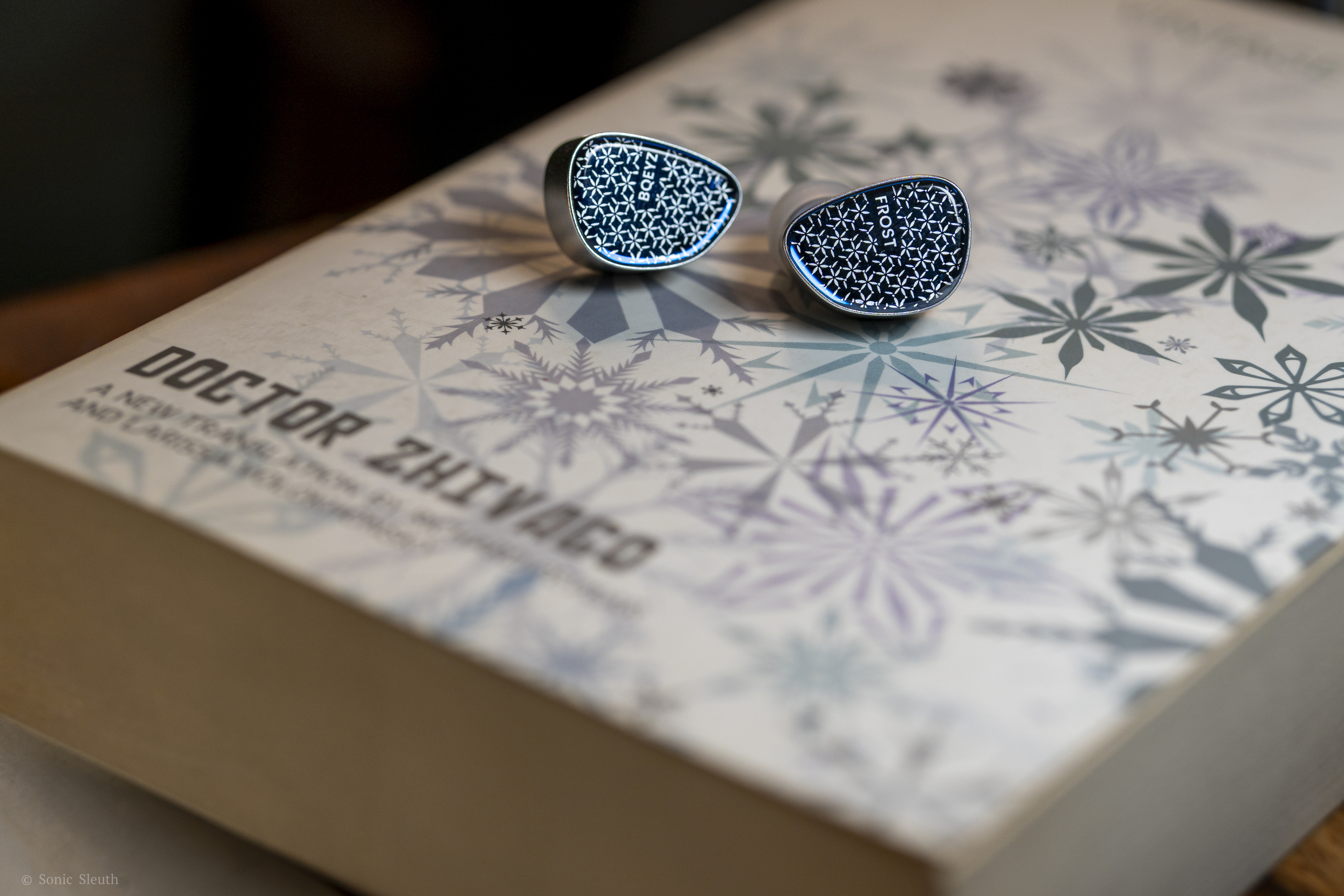
In the end, the BQEYZ Frost is an IEM of beautiful contradictions. Its name suggests a chilly, analytical presentation, but my time with it revealed the exact opposite, a sound signature steeped in a comfortable and engaging warmth. What BQEYZ has achieved here is a masterclass in coherence and musicality. The seamless integration of its two drivers is truly exceptional, creating a single, unified sound with an wonderfully organic and natural timbre that is simply a joy to listen to. But it's not a set without its compromises. That inviting warmth comes at the cost of raw speed and the last word in clarity, with a low end that favors a rich, full-bodied impact over the sharpest definition or deep sub-bass rumble. The Frost doesn't aim to be a technical powerhouse for dissecting every micro-detail in a track. Instead, it’s a companion for long, immersive listening sessions, a brilliantly executed IEM for the listener who prioritizes a soulful and cohesive musical experience above all else.
